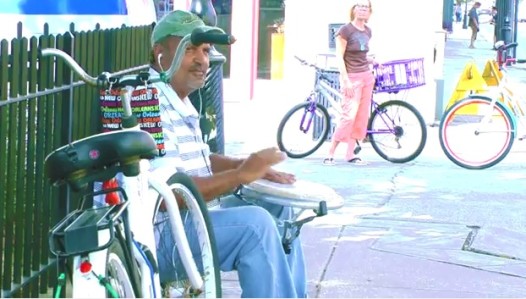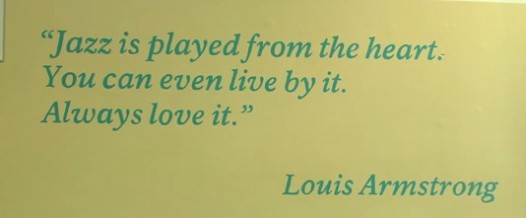Who: Karen Armagost, Interpretive Ranger – New Orleans Jazz National Historical Park
Film by: UNO student and documentarian Kevin Fields
Editor’s Note: NolaVie partners with students of UNO professor László Zsolt Fülöp, pairing them with artists, non-profits, environmental groups, and cultural entities to facilitate a live curriculum that results in a short documentary. In this short doc, Kevin Fields talks with interpretive ranger of the New Orleans Jazz National Historical Park
New Orleans Jazz spread throughout the United States. In the 1920s, when it was the new music, it became the popular music of the country, and that was really driven by New Orleans musicians. Since then, New Orleans jazz has spread worldwide. People in Europe, people in Asia, and people all over the world know about New Orleans jazz and come to our lovely city to learn about New Orleans jazz.
According the Karen Armagost (Interpretive Ranger at the New Orleans Jazz National Historical Park), “Everything is connected in life and in music,” so people hear music of different genres, and New Orleans musicians have always had a special beat and rhythm that they bring to the world, and that influences music everywhere.
 The New Orleans Jazz National Historical Park aims to keep jazz music heard and people informed, so it provides a lot of performances in the visitor center and in the U.S. Mint performance space. The Jazz Park brings musicians from New Orleans to come and perform at the Park, and they also provide educational programs. They provide ranger walks where people can go and learn about this history jazz and how it developed in the city. They also do educational programs for school groups that come to the park to learn about jazz, and they are constantly looking for ways to go out into the community.
The New Orleans Jazz National Historical Park aims to keep jazz music heard and people informed, so it provides a lot of performances in the visitor center and in the U.S. Mint performance space. The Jazz Park brings musicians from New Orleans to come and perform at the Park, and they also provide educational programs. They provide ranger walks where people can go and learn about this history jazz and how it developed in the city. They also do educational programs for school groups that come to the park to learn about jazz, and they are constantly looking for ways to go out into the community.
As is true for the city of New Orleans, the spring and fall are when the Jazz Park is bursting with events and programs. It’s when the weather is perfect and music festivals are abound, and that is when people from Europe, Australia, Asia, and everywhere in the world come to New Orleans and go to the Jazz Park to learn about the culture that makes New Orleans so vibrant and unique.
According to Armagost, “The biggest challenge is really staffing and resources. National parks all over the country have not had their budgets increased like they’d like them to.” The Jazz Park has limited staff to run the programs that they provide, and they’d love to provide more programs; yet, with a short staff they can’t do all that they desire.
 The other challenge is, “getting the word out about the park itself.” Armagost wants people to know that the park is here, that they’re providing programming, and they want to spread the word so people – all over the country and here in New Orleans – know what the Jazz Park is and how they can get involved.
The other challenge is, “getting the word out about the park itself.” Armagost wants people to know that the park is here, that they’re providing programming, and they want to spread the word so people – all over the country and here in New Orleans – know what the Jazz Park is and how they can get involved.
To find out more about the New Orleans Jazz National Historical Park, you can visit their website which is where you can also find their calendar of concerts for February.
 NOLAbeings Multimedia artist Claire Bangser created NOLAbeings as a portrait-based story project that marries...
NOLAbeings Multimedia artist Claire Bangser created NOLAbeings as a portrait-based story project that marries...  Voodoo in New Orleans: Reviving history: New Orleans fortune telling This article takes a deep dive into the history of Voodoo in New Orleans, its hybridization with Catholicism, and its present-day place in the city's culture. The author visits fortune-tellers in the French Quarter, using their guidance as a tool for introspection rather than a deterministic predictor of the future. Through her experiences in New Orleans, the author feels a mystical connection to both the past and the future.
Voodoo in New Orleans: Reviving history: New Orleans fortune telling This article takes a deep dive into the history of Voodoo in New Orleans, its hybridization with Catholicism, and its present-day place in the city's culture. The author visits fortune-tellers in the French Quarter, using their guidance as a tool for introspection rather than a deterministic predictor of the future. Through her experiences in New Orleans, the author feels a mystical connection to both the past and the future. 